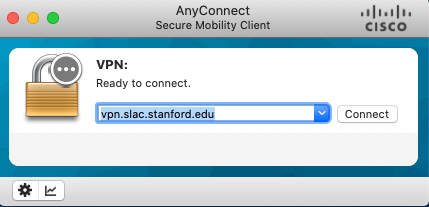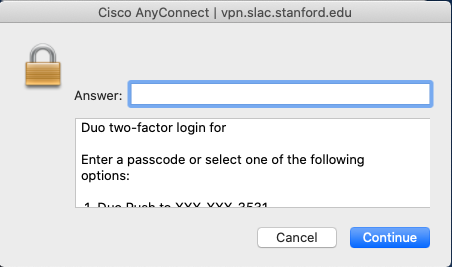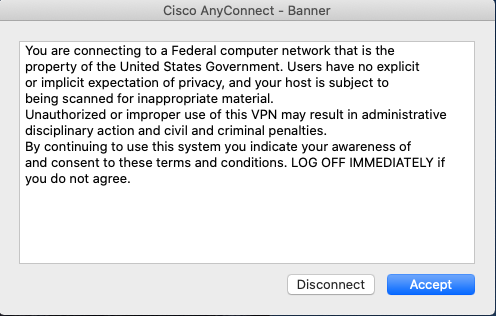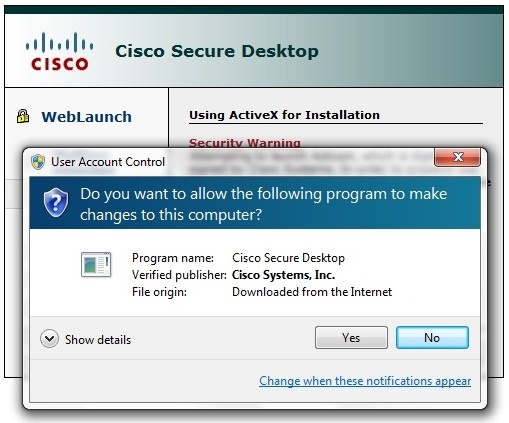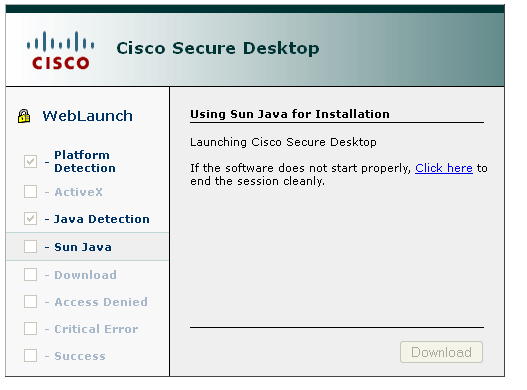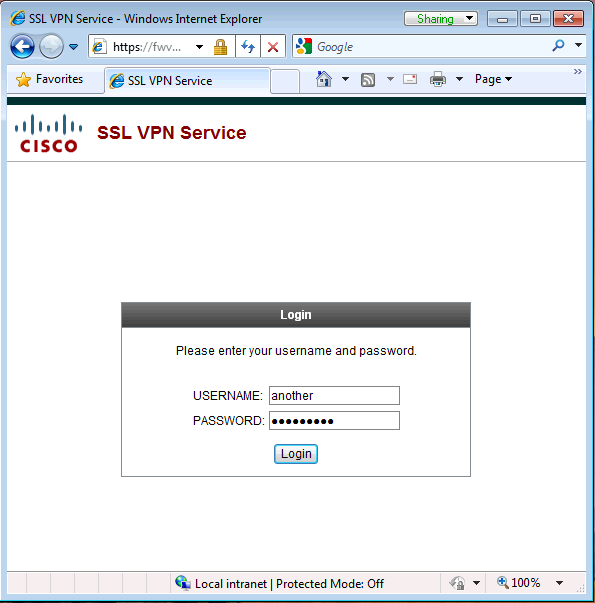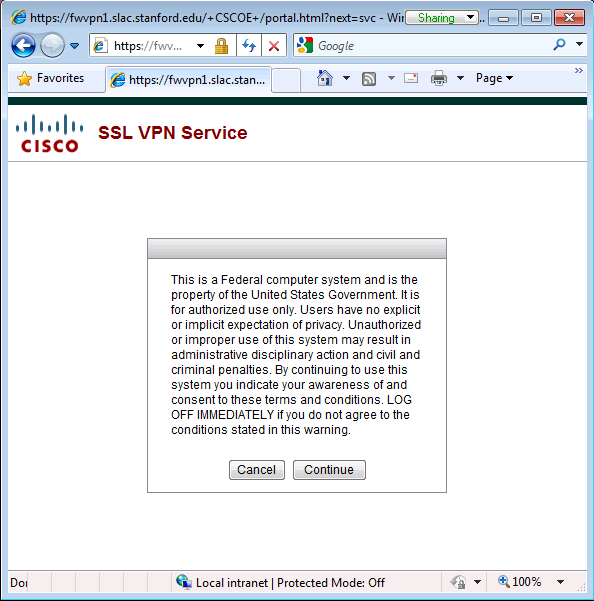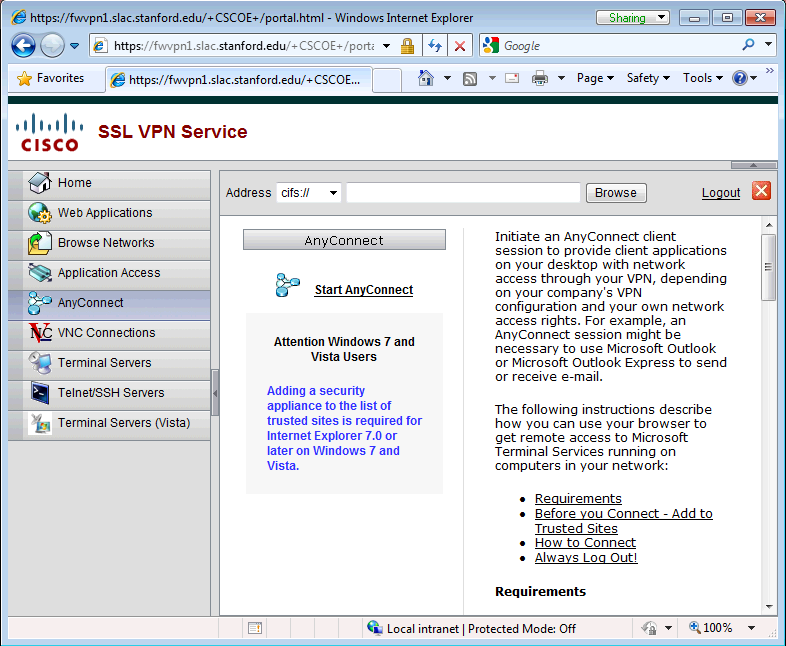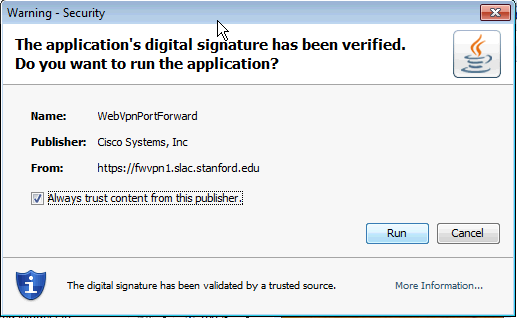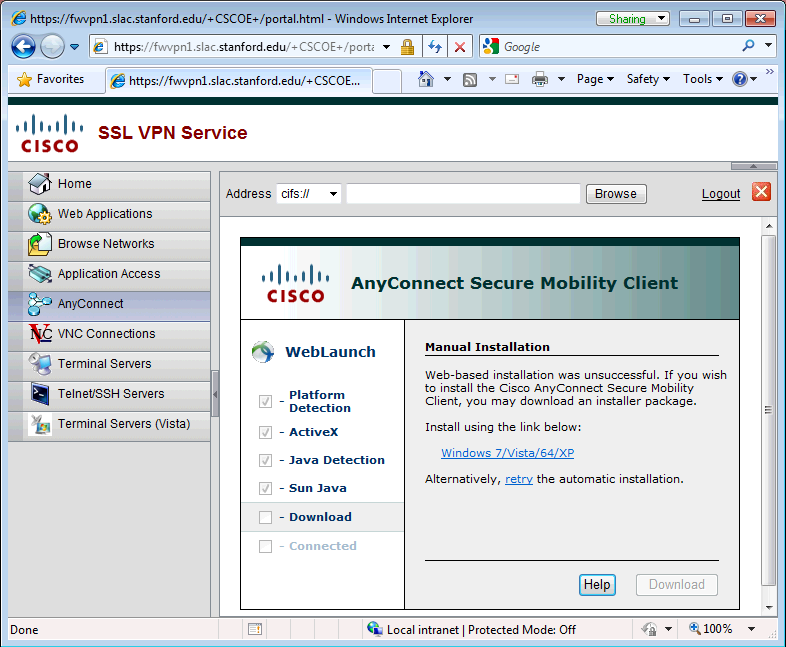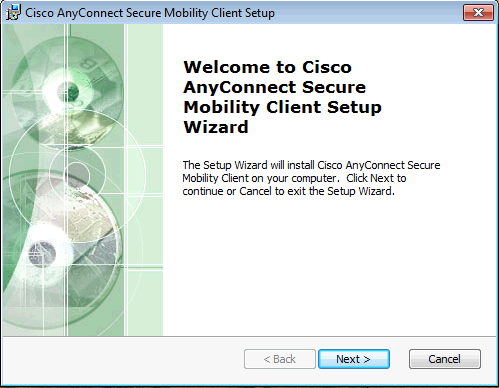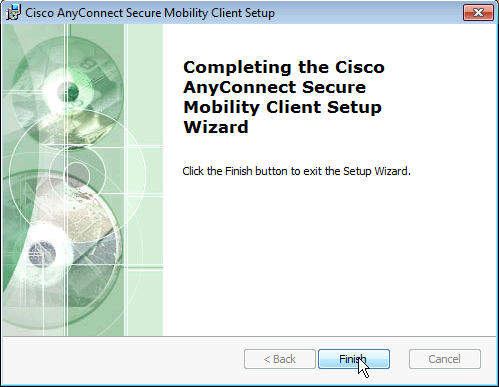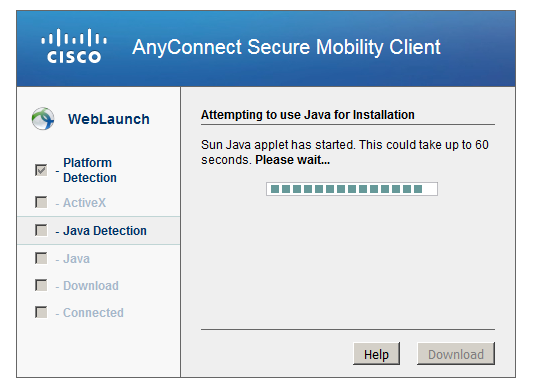Quick instruction guide
On a SLAC built windows device the vpn client is pre-installed, so you can just go on start menu -> launch Cisco Anyconnect Secure mobility client. Then ensure the connection string is "vpn.slac.stanford.edu" and click on connect. Enter your SLAC's windows credentials, enter the DUO prompt, then accept the banner and you are connected as indicated in the taskbar.
On personal computers, MACs or linux you will need to install the vpn client available at https://vpn.slac.stanford.edu/ . If you are using a mobile device the client to look for in the app store is "Cisco Anyconnect Secure Mobility Client".
1- 2- 3-
4- 5-
Table of Contents
- Introduction
- Requirements
- Posture Assessment of Systems Entering SLAC VPN
- Frequently Asked Questions (FAQs)
Introduction
This page documents the use of the SLAC VPN service.
| Table of Contents |
|---|
...
Virtual Private Network (VPN) provides a secure connection between your computer and the resources available at your home institution. In the case of SLAC, we offer a VPN service that permits authorized users to gain visibility of SLAC network resources from the "visitor" wireless network or in remote locations such as from your home, or from another country.
This page documents the use of the SLAC VPN service.
Implementation
SLAC utilizes Cisco's Remote Access VPN line of products and specifically requires the use of Cisco's AnyConnect software.
outside of SLAC. This includes the SLAC Visitor Wireless network.
Assistance with installation and usage of this system is available. Contact our IT helpdesk via the details belowIn order to connect to SLAC's VPN, a user must install the AnyConnect client. This allows SLAC to enforce certain access restrictions and checks that the user's computer is not running a keylogger, that the user is not running an unsupported version of Windows (95, 98, ME), and enforces an access control list (ACL) to limit access.
Requirements
- You must have a valid SLAC Windows account
- Your account must be given SLAC VPN account linkaccess, and you must agree to the usage policies outlined.
- You must be running at least one of the following operating systems
- Windows XP SP3
- Windows Vista
- Windows 7 SP1
- Mac OSX 10.6.7
- Linux??
This guide currently follows the Windows 7 method of install
Connecting to SLAC's VPN
Open a Web Browser to our VPN gateway
In order to connect to SLAV's VPN, you must have the AnyConnect software installed. By going to the following webpage, we can check to make sure you have the software installed and configured (and up to date), and provide an automated install if you do not currently have the software installed and configured.
| Note |
|---|
We recommend using Internet Explorer 8 under Windows to ease installation |
Your web browser should come up with the following series of screens
Allow Cisco Secure Desktop to Check Your System
The web page will instantiate a java applet so that it may check your system for the presence of the AnyConnect software.
This may bring up a dialog box which will prompt you to run the application or not.
- If you do not wish to see this dialog again in the future, select 'Always trust content from this publish'
- Click on 'Run' to allow the applet to scan your system
Log In
The following web page will be presented upon the initial system scan:
- Enter your provided VPN credentials
Agree to the Banner
Upon successful login, a banner will be shown on the webpage.
- Click Continue
Initiate the AnyConnect Client
A webpage that offers various methods to access the SLAC VPN services will be presented.
- Click on 'Start AnyConnect'
Install the AnyConnect Software (if required)
If necessary (either because it is your first time accessing SLAC's VPN, or there is a new version of the AnyConnect client to be installed), the web page will present that the AnyConnect software needs to be installed.
You have connected to SLAC's VPN Service
Upon successful VPN negotiation, you should get the following popup from AnyConnect showing that you have connected to SLAC's VPN service
To Disconnect from the SLAC VPN
The AnyConnect client exists as a tray icon; you can get to it from the System tray next to the clock in the bottom right of your screen.
- To disconnect click on 'Disconnect'
Questions and Answers (FAQ)
What are the timeouts
There is a fixed timeout of 8 hours after which your VPN connection is disconnected. There is also a non-activity timeout of 20 minutes.
Can I access the K disk
Currently you cannot access this disk. Once the service is better understood this will be reviewed.
I Get a 'AnyConnect client install failed' Error
Depending on which operating system version you are using, a manual install of the AnyConnect client may be required. If you get the following error, you must manually install the AnyConnect client.
To manually install the client, do the following:
- Download the binary from the webpage
- Locate the binary file that has been downloaded; you can do this from the 'Open Folder' button on the download dialog.
- The AnyConnect client binary install will have a file in the format of anyconnect-win-*.exe.
- Right click on the binary file to get the contextual menu up, and select 'Run as Administrator'
- Follow the installation prompts, agreeing where ever it asks
- Refresh the webpage and the AnyConnect Client should automatically instantiate and connect you to SLAC's VPN.
I'm using Internet Explorer and I get a 'AnyConnect client install failed'
Under Windows 7, ActiveX controls enable Trusted Sites to assume Administrative access. If you get the following page upon logging into SLAC's VPN, then you need to do the following:
Under IE's Tools menu, select Options -> Security -> Trusted Sites
Add the following to the list-https://fwvpn1.slac.stanford.edu and https://fwvpn2.slac.stanford.edu
Refresh the webpage and the AnyConnect Client should automatically instantiate and connect you to SLAC's VPN.
I want to connect my Smart Phone to SLAC's VPN
- enrolled in two-factor authentication (visit https://www-internal.slac.stanford.edu/twostep/ from a computer on the SLAC network).
- You must have SLAC supported operating system to get successful connection on SLAC Network. Please refer to the following KB articles:
We officially support Windows, Mac OS and Linux but VPN is available on several other platforms (android, ipads etc.).
Posture Assessment of Systems Entering SLAC VPN
- What is changing and why?
As an open laboratory, SLAC makes every effort to enable access to tools and systems needed for research purposes without compromising the security and integrity of our other information and systems. The security of the SLAC network, however, must be protected from the risk posed by the number and variety of devices that use it. Consequently, effective March 19, 2018, devices being used to log into the SLAC virtual private network (VPN) will be checked to ensure they do not pose a security risk to SLAC.
- What’s the impact?
If you use a SLAC-owned, centrally managed device to connect to VPN, you will most likely be granted access with no issues. If your SLAC-owned device is denied access, contact the IT Service Desk (see contact info below) for assistance.
If you use a personally owned device, and that device meets the minimum requirements for using the VPN, then you will be allowed in. If, however, your device does not meet the requirements for OS version, virus control, and other security measures, you will be denied access to the VPN. You are responsible for updating your personally owned device.
If you use a device provided by an institution other than SLAC or Stanford, contact that institution for assistance.
If you are denied access, the following options are available:
- Update the device software so that it is compliant (see Minimum System Requirements below).
- Use Citrix as an alternative method for gaining access to the SLAC systems you need. To request Citrix access, in Service Now, go to the Service Catalog, then select Accounts & Access > Citrix Account Request.
- If you are using a personal or other non-SLAC-owned device, use a SLAC-owned, centrally managed device instead.
- If the device is SLAC-owned, contact the IT Service Desk (see contact info below).
- Minimum System Requirements
The minimum requirements are:
- Antivirus with current signatures (<15 days old)
- A current OS version, such as:
- Windows 10
- macOS 10.11 and up
- Android 10 and up
- iOS 13 and up
- Specific Linux versions are being confirmed and will be updated here when available.
- Resources
If you are a SLAC employee and need antivirus software for your home computer, free software provided by SLAC can be downloaded from the Cyber Security Resources page.
- IT Service Desk Contact Information
Phone: (650) 926-4357; Extension: x4357 (xHELP)
Service Now: Submit a help request
Security
The SLAC VPN connects you directly to the SLAC network. All of your network traffic is sent across an encrypted link, including Internet traffic. You should adhere to the same SLAC computing policies that you do when using computers on-site. Remember to disconnect from the VPN before leaving any computer unattended.
Detailed steps to download the VPN client
The vpn clients is available upon authentication at the webpage https://vpn.slac.stanford.edu/ . Log in and the system will detect which version is suitable for your systems.
The Java installation usually fails, but then it defaults to the manual installation. Download the VPN client by clicking on the link provided. Install it as administrator:
- On linux you need to execute the file that you downloaded as root with the command "sh vpnsetup.sh" (you can also use sudo from your regular account with the command "sudo sh vpnsetup.sh".
- On windows you need to do a right click and "Run as administrator"
- On mac you will need "to allow access" when running it
The first time you connect, you will have to manually enter the connection hostname, please set it as vpn.slac.stanford.edu
What to Do if You Have Problems
Please have a look to the FAQ SLAC VPN Frequently Asked Questions (FAQ) and SLAC ServiceNow KB Article for Posture Assessment.
If necessary, manual download of the client install packages can be done via links here: Cisco AnyConnect Installation Packages
For further help, please contact our IT helpdesk.
Other Notes
4/5/2016: Two-factor authentication is now deployed on SLAC VPN gateways, if you are already enrolled you will be asked for 2nd factor (push, token, etc.)
1/11/2018: Posture assessment is deployed on SLAC VPN gateways, for FAQs please visit: https://slacprod.servicenowservices.com/kb_view.do?sysparm_article=KB0010903
...
